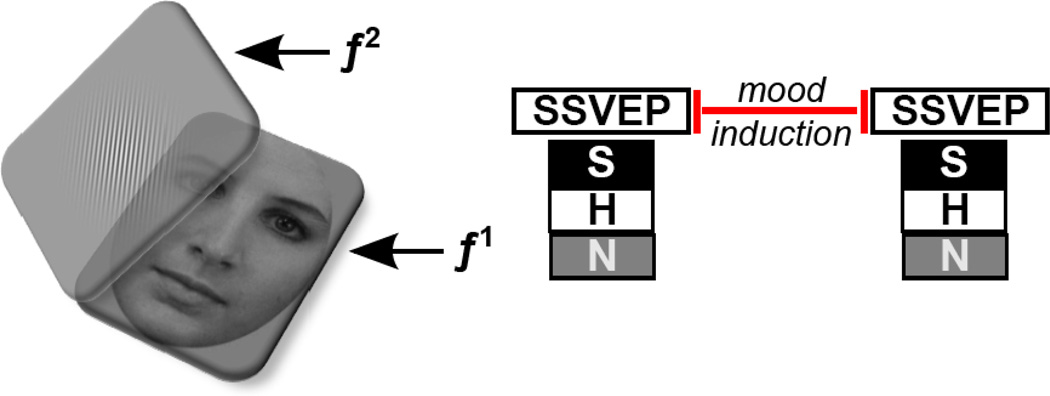Figure 1.
A schematic layout of the change detection task, employing the frequency-tagging technique. Faces (distractors) were luminance modulated (i.e., on/off flickered) at a constant rate of 12 Hz (f1). The Gabor patch was fully spatially super-imposed over the face as a second, translucent layer, flickering at a distinct rate of 15 Hz (f2); individuals were tasked with monitoring the Gabor patch layer for changes in orientation. Subjectively, participants perceived a fused percept of face plus Gabor, however, the frequency-tagging approach allowed us to analyze visuocortical responses separately. The distractor faces contained sad (S), happy (H), or neutral (N) expressions on any given trial. The same SSVEP task was administered twice: once prior to and once following a negative mood induction procedure.

